Matt Lhoumeau is the co-founder and CEO of Concord, a contract management platform used by over 1,500 companies worldwide. Before founding Concord, Matt worked with Nicholas Sarkozy during the 2007 French presidential campaign and later for a major telecom company, where his frustration with manual contract management inspired him to transform how businesses handle agreements.
Congrats, you’ve just landed a new RevOps role! The stack is unfamiliar, the processes are broken, and your CFO wants “better forecasting” by next month. While your peers scramble to build prettier dashboards, you have 90 days to prove you’re not just another reporting hire.
Here’s the reality: 35% of leaders still rely on manual processes like spreadsheets for forecasting, and less than 15% of companies have a regular cadence to analyze RevOps data strategically. Your competition isn’t using contract intelligence to build committed revenue forecasts. They’re still guessing based on pipeline probabilities.
Hundreds of RevOps professionals make the same mistake: they optimize the wrong metrics. While they’re fine-tuning lead scoring and attribution models, the most predictable revenue data in your company is locked in contracts that Legal filed away months ago.
Here’s how contract intelligence can change that.
Transform Forecasting from Guesswork to Commitment
Your first revenue meeting is in two weeks. Your CFO will ask the same question every CFO asks: “What revenue can we count on?” If you answer with pipeline probabilities, you’re positioning yourself as a reporting analyst. If you answer with contracted commitments, you’re positioning yourself as a strategic partner.
80% of CFOs ranked “developing a planning, budgeting, and forecasting strategy” as one of their top five priorities, according to Gartner. But here’s what most RevOps professionals miss: CFOs don’t want pipeline forecasts. They want commitment forecasts.
Your 30-day action plan:
- Week 1: Audit your contract data sources. Calculate how much revenue is contractually committed vs. forecasted
- Week 2: Identify renewal dates and expansion opportunities buried in existing agreements
- Week 3: Build a “committed revenue” view that shows guaranteed renewals, scheduled expansions, and contracted escalations
- Week 4: Present your CFO with a forecast that separates committed revenue from pipeline projections
When you can say “We have $2.1M in committed renewals plus $800K in contracted expansions, with only $1.2M dependent on new business,” you’ve just changed the conversation from hoping to planning.
Contract Data Reveals Revenue Patterns Your CRM Can’t
Every RevOps professional knows attribution is broken. You can track which campaign influenced a deal, but can you track which campaigns drive longer contract terms? Which lead sources result in favorable pricing? Which customer segments consistently negotiate the smallest discounts?
Contract data extraction tools can save significant time by automating the identification and capture of key contract terms, with many organizations already using contract analysis technologies.
Your strategic implementation:
- Month 1: Implement contract management software that extracts structured data from agreements
- Month 2: Analyze correlation between marketing channels and contract terms (length, value, renewal rates)
- Month 3: Build contract intelligence dashboards that inform resource allocation decisions
This isn’t just reporting. It’s strategic intelligence. When you can show your CEO that enterprise inbound leads convert to 24-month contracts while cold outbound converts to 12-month agreements, you’re enabling strategic planning, not just tracking performance.
Eliminate the Reporting Bottleneck
Your current process probably looks like this: Legal files contracts, finance manually extracts key terms for monthly reports, and you wait three weeks for renewal data. By the time you get the information, it’s historical, not actionable.
Manual data cleansing is the biggest time waster in revenue operations roles, according to the Revenue Operations Alliance. Companies that invest in RevOps report 10 to 20% increases in sales productivity, primarily by eliminating these manual processes.
Your process transformation:
- Immediate: Centralize contract data in a system that provides real-time visibility into deal terms
- Week 2: Automate renewal opportunity creation based on contract dates
- Week 3: Build alerts for expansion opportunities and risk indicators
- Month 1: Eliminate manual contract reporting by implementing automated data extraction
When you eliminate the delay between contract execution and revenue intelligence, you position yourself as the RevOps professional who provides actionable insights, not just historical reports.
Cross-Functional Impact Gets You Promoted
The RevOps professionals who advance fastest don’t just optimize individual functions. They create cross-functional value. Contract intelligence gives you this leverage because contracts touch every revenue-generating team.
Companies with robust sales enablement strategies report an 8% increase in quarterly revenue, but most RevOps professionals can’t measure enablement impact because they don’t have access to contract performance data.
Your cross-functional strategy:
- Sales: Show which contract terms accelerate closure (payment terms, SOW structures, renewal clauses)
- Marketing: Demonstrate which campaigns drive higher contract values and longer commitments
- Customer Success: Identify contract terms that correlate with higher renewal rates and expansion opportunities
- Finance: Provide committed revenue forecasts that improve budgeting accuracy
When you can demonstrate measurable impact across multiple departments, you’re not just reporting. You’re enabling organizational optimization.
Position Yourself as the AI-First RevOps Leader
While your peers are still manually extracting contract data, you’re implementing AI that automatically analyzes contract performance, identifies optimization opportunities, and predicts renewal risks. This positioning is crucial for career advancement.
Your AI implementation roadmap:
- Month 1: Implement contract lifecycle management software with AI-powered data extraction
- Month 2: Use AI to identify patterns in contract terms that predict customer lifetime value
- Month 3: Implement predictive analytics that flag renewal risks and expansion opportunities
The RevOps professionals who understand how to leverage AI for contract intelligence aren’t just solving today’s problems. They’re positioning themselves as the strategic leaders who can navigate tomorrow’s challenges.
Your 90-Day Transformation: From Tactical Executor to Strategic Partner
Days 1-30: Build the foundation
- Audit current contract data sources and calculate committed vs. forecasted revenue
- Implement contract management system with automated data extraction
- Create committed revenue dashboard for CFO reporting
Days 31-60: Demonstrate strategic value
- Analyze contract terms by acquisition channel and customer segment
- Build cross-functional contract intelligence reports
- Present optimization opportunities based on contract data analysis
Days 61-90: Establish strategic partnership
- Implement AI-powered contract analysis and renewal prediction
- Create contract intelligence that informs resource allocation decisions
- Position yourself as the RevOps leader who provides forward-looking insights
The Bottom Line: Contract Intelligence = Career Acceleration
Here’s what I’ve learned after working with hundreds of RevOps professionals: the ones who get promoted aren’t necessarily the best at building dashboards. They’re the ones who can transform raw data into strategic insights that drive executive decision-making.
In your first 90 days, focus on demonstrating how contract intelligence can improve forecasting accuracy, and find ways to enable cross-functional optimization. When you can show your CEO that certain acquisition strategies result in stronger contractual commitments, you’re making yourself indispensable as a strategic planner.





Follow us on social media